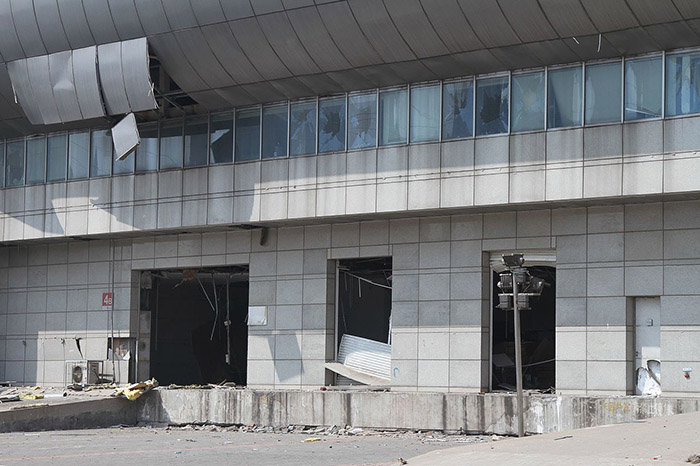Tianjin port explosions could be most expensive maritime disaster
Jon Guy, Special Correspondent | Aug 26, 2015 3:29PM EDT
 A building damaged by the Port of Tianjin explosion.
A building damaged by the Port of Tianjin explosion.
An explosion and fire that devastated the Chinese port of Tianjin, the 10th-busiest global container gateway, could cost the insurance industry more than $2 billion, making it one of the most expensive maritime disasters ever, according to a London market underwriter.
The catastrophe could prove "market-changing" and a cost in excess of $2 billion is "certainly more than possible," said the London market underwriter who asked to remain anonymous. "It remains to be seen if this figure will include the insured commercial property damage and business interruption covers from affected firms."
About 18,000 containers at the port are said to have been completely destroyed, while other cargo has reportedly been heavily contaminated by toxic dust, according to ISA Surveys, a marine cargo surveyor. Automobile losses alone will top $300 million.
A fuller accounting of the carnage will take time as it is feared that rainfall before the clean-up operation is completed could cause cyanide stored in the warehouse where the explosion occurred to create a cloud of highly toxic gas. Chinese authorities have restricted access to the affected area and evacuated surrounding homes and offices.
This lack of access is hampering efforts by loss adjusters and insurance underwriters to establish the disaster's likely cost. It has also resulted in a lack of claims for damaged or destroyed cargo. While underwriters in the London market and the international reinsurance markets are braced for major losses, many are unsure how much these could total.
A complex web of claims payments is likely to ensue as insurers seek to recover costs from the insurer of the warehouse. Yet its coverage will probably be far lower than the amount claimed by underwriters, leaving insurers to pay claims with little hope of further recovery.
The loss of an estimated 10,000 motor vehicles is likely to have a heavy impact on insurers in the specialist cargo market for the transport of motor vehicles, as only a handful of insurers and reinsurers cover such risks.
“The marine market across all classes is facing a major manmade catastrophe claim and the cargo market may well be facing a claim level that matches that which resulted from Superstorm Sandy,” the underwriter said. “It is likely to be a market-changing event due to its scale and underwriters will certainly be looking at better managing their future accumulation risks."
No comments:
Post a Comment